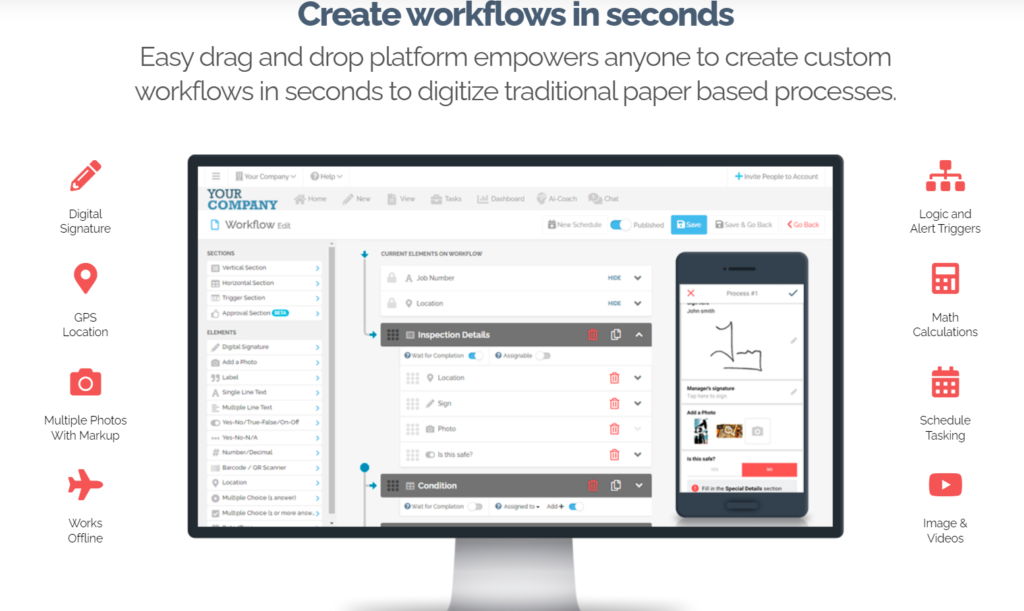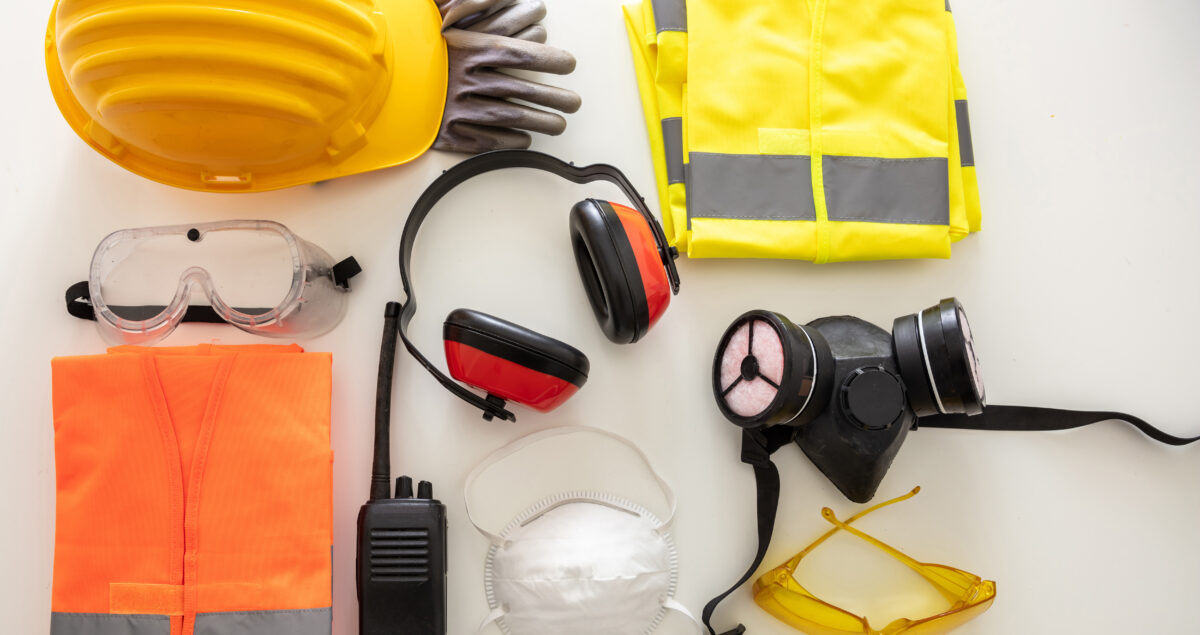Key Takeaways:
- Safe Handling Protocols: Implementing strict protocols for handling hazardous materials is crucial for preventing accidents and ensuring worker safety.
- Comprehensive Training: Providing comprehensive training for employees on the safe handling, storage, and disposal of hazardous materials enhances safety and compliance.
- Advanced Digital Solutions: Utilizing digital tools like FAT FINGER can streamline hazardous material management, ensuring adherence to safety protocols and regulatory requirements.
Efficient Handling of Hazardous Materials
As industries continue to evolve, the need for efficient and safe handling of hazardous materials has become paramount. This is where FAT FINGER comes into play. FAT FINGER is a digital workflow procedure builder that allows you to create checklists, workflows, and digital procedures that unlock operational excellence. With features like drag and drop workflow builder, augmented reality, AI Coach, IoT device connectivity, integrations, mobile and desktop workflows, and dashboards, FAT FINGER provides a comprehensive solution for handling hazardous materials.
Request a demo today to see how FAT FINGER can revolutionize your hazardous material handling procedures.
Why Efficient Handling of Hazardous Materials is Crucial
Before delving into how FAT FINGER can help, it’s important to understand why efficient handling of hazardous materials is so crucial. Hazardous materials pose a significant risk to human health and the environment. Mishandling can lead to accidents, legal penalties, and damage to a company’s reputation. Therefore, having a robust system in place for handling these materials is not just a good practice, but a necessity.
How FAT FINGER Enhances Efficiency in Hazardous Material Handling

FAT FINGER’s features are designed to streamline and enhance the efficiency of hazardous material handling. Here’s how:
- Drag and Drop Workflow Builder: This feature allows you to create custom workflows for handling hazardous materials. You can define each step of the process, ensuring that all safety protocols are followed.
- Augmented Reality: FAT FINGER’s augmented reality feature can provide real-time guidance to workers, reducing the risk of errors and accidents.
- AI Coach: The AI Coach can provide personalized training to workers, ensuring they are well-equipped to handle hazardous materials safely.
- IoT Device Connectivity: By connecting to IoT devices, FAT FINGER can monitor the conditions of hazardous materials in real-time, alerting you to any potential risks.
- Integrations: FAT FINGER can be integrated with other systems, ensuring seamless data flow and improved efficiency.
- Mobile and Desktop Workflows: With FAT FINGER, you can manage your hazardous material handling procedures from anywhere, at any time.
- Dashboards: FAT FINGER’s dashboards provide a clear overview of your operations, helping you identify areas for improvement.
Case Study: Improving Efficiency with FAT FINGER
To illustrate the effectiveness of FAT FINGER, let’s look at a case study. A chemical manufacturing company was struggling with inefficient hazardous material handling procedures. After implementing FAT FINGER, they were able to streamline their processes, reduce errors, and improve safety. The drag and drop workflow builder allowed them to define clear procedures, while the AI Coach provided personalized training to their workers. As a result, the company saw a significant reduction in accidents and an increase in operational efficiency.
Conclusion
Efficient handling of hazardous materials is crucial for any industry. With its robust features, FAT FINGER provides a comprehensive solution for managing these procedures. Whether it’s creating custom workflows, providing real-time guidance, or monitoring conditions in real-time, FAT FINGER has you covered.
Build a digital workflow for free on FAT FINGER or schedule a demo today to see how FAT FINGER can revolutionize your hazardous material handling procedures.
FAQs for Efficient Handling of Hazardous Materials to Boost Safety
Q: What are hazardous materials in the oil and gas industry?
Hazardous materials include chemicals, gases, and other substances that pose risks to health, safety, and the environment. Proper handling, storage, and disposal of these materials are crucial for preventing accidents and ensuring compliance with safety regulations.
Q: Why is it important to have strict protocols for handling hazardous materials?
Strict protocols ensure that hazardous materials are handled safely, reducing the risk of spills, leaks, and exposures. These protocols protect workers, prevent environmental contamination, and ensure compliance with safety regulations.
Q: How can comprehensive training improve the handling of hazardous materials?
Training ensures that employees understand the risks associated with hazardous materials and know the proper procedures for handling, storing, and disposing of them. Well-trained employees are better equipped to prevent accidents, respond to emergencies, and comply with safety regulations, enhancing overall workplace safety.
Q: What are the key components of a hazardous materials management plan?
A hazardous materials management plan typically includes risk assessment, safe handling procedures, proper storage guidelines, emergency response plans, and employee training programs. These components work together to ensure the safe and compliant management of hazardous materials.
Q: How do digital tools like FAT FINGER enhance hazardous materials management?
Digital tools like FAT FINGER provide real-time data, checklists, and compliance tracking, streamlining the management of hazardous materials. These tools help ensure that all safety protocols are followed, documentation is accurate, and any issues are promptly addressed.
Q: What role does proper storage play in handling hazardous materials?
Proper storage of hazardous materials is crucial for preventing spills, leaks, and exposures. It involves using appropriate containers, labeling materials correctly, and storing substances in designated areas with proper ventilation and security measures.
Q: How can companies ensure compliance with hazardous materials regulations?
Companies can ensure compliance by staying updated with relevant regulations, implementing comprehensive management plans, conducting regular audits, and using digital tools to track compliance. Training employees on regulatory requirements is also essential for maintaining compliance.
Q: What are some common hazards associated with handling hazardous materials?
Common hazards include chemical burns, respiratory issues, fire, explosions, and environmental contamination. Proper handling procedures, protective equipment, and emergency response plans are essential for mitigating these risks.
Q: Why is it important to have an emergency response plan for hazardous materials?
An emergency response plan ensures that employees know how to react quickly and effectively in case of a spill, leak, or exposure. It includes procedures for containment, evacuation, medical treatment, and communication with emergency services.
Q: How does personal protective equipment (PPE) contribute to the safe handling of hazardous materials?
PPE, such as gloves, goggles, respirators, and protective clothing, provides a barrier between employees and hazardous substances. Using the correct PPE is essential for protecting workers from exposure to harmful chemicals and other hazards.
Q: What steps should be taken to dispose of hazardous materials safely?
Safe disposal of hazardous materials involves following regulatory guidelines, using designated disposal methods, properly labeling waste, and ensuring that disposal sites are equipped to handle the specific types of hazardous materials. Training employees on disposal procedures is also crucial.
Q: How can companies continuously improve their hazardous materials management practices?
Continuous improvement can be achieved by regularly reviewing and updating management plans, conducting risk assessments, using feedback from incidents and near misses, and leveraging advancements in digital tools and technologies to enhance safety protocols.


